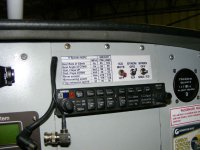Hi folks
I'm thinking about my first airplane and an an RV9A checks all of the boxes except.. I'm in the heavy category at around 240lbs, probably closer to 250 with a headset and jacket on.
Are there pilots in this range flying the RV9A and do you find this a serious limitation? A passenger/instructor in the right seat puts on the edge of W&B and/or the nose wheel load limit.
On paper it looks like not the ideal situation but I wonder how big of an issue in practice. I've read about this being a high motivation factor to shed off pounds but losing 40lbs or so is not a small feat. Should I wait until this is done before jumping into RV ownership?
I'm thinking about my first airplane and an an RV9A checks all of the boxes except.. I'm in the heavy category at around 240lbs, probably closer to 250 with a headset and jacket on.
Are there pilots in this range flying the RV9A and do you find this a serious limitation? A passenger/instructor in the right seat puts on the edge of W&B and/or the nose wheel load limit.
On paper it looks like not the ideal situation but I wonder how big of an issue in practice. I've read about this being a high motivation factor to shed off pounds but losing 40lbs or so is not a small feat. Should I wait until this is done before jumping into RV ownership?





